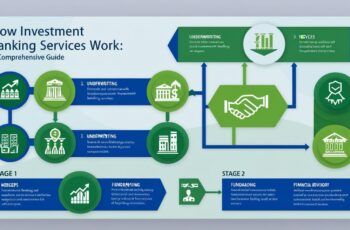Introduction
Insurance is an essential aspect of financial planning in the United States, offering protection against unexpected events and financial turmoil. From health to auto, and life to homeowners insurance, the varieties available cater to different needs and risks. This article aims to guide you on how to maximize the benefits of different types of insurance, ensuring you’re well-covered without overspending.
Understanding Insurance Basics
Insurance is a contract represented by a policy in which an individual or entity receives financial protection or reimbursement against losses from an insurance company. The company pools clients’ risks to make payments more affordable for the insured.
How Insurance Works: Insurance policies are used to hedge against the risk of financial losses, both big and small, that may result from damage to the insured or her property, or from liability for damage or injury caused to a third party.
Types of Insurance in the US
Health Insurance
It covers medical expenses and sometimes, lost income due to illness or injury. The Affordable Care Act (ACA) has expanded access and options for Americans.
Auto Insurance
This mandatory insurance covers vehicles and protects the owner against financial loss in the event of an accident or theft.
Life Insurance
Life insurance provides financial support to beneficiaries after the policyholder’s death. It’s a cornerstone of financial planning for dependents’ future security.
Homeowners/Renters Insurance
These insurance types protect your home and belongings from damage or theft, and offer liability coverage.
Disability Insurance
This type of insurance ensures income continuity in case of inability to work due to disability.
I’ll continue with the remaining sections in the next part of the article.
Maximizing Benefits from Health Insurance
Choosing the right health insurance plan is crucial. Consider factors like network of doctors, covered medications, and premium costs. Understanding the balance between premiums and out-of-pocket expenses can significantly affect your financial planning. Regularly review your health plan during open enrollment periods and adjust according to changes in health needs or financial status.
Getting the Best from Auto Insurance
Auto insurance can be optimized by understanding coverage options like liability, collision, and comprehensive. To reduce premiums, consider factors like your vehicle’s make and model, your driving record, and any applicable discounts. In the event of a claim or accident, knowing your policy details and rights can make the process smoother.
Life Insurance: Ensuring Future Security
Choosing the right type of life insurance, whether term or whole life, depends on your financial goals and family situation. It’s vital to regularly update your policy to reflect life changes like marriage, childbirth, or significant purchases. Ensuring your beneficiaries are up-to-date is equally important for the policy to serve its purpose.
Navigating Homeowners and Renters Insurance
Understand what your homeowners or renters insurance covers and what it doesn’t. For instance, natural disasters like floods or earthquakes often require additional coverage. Regularly reassess the value of your belongings and property to ensure adequate coverage. Implementing safety measures can also help in reducing insurance premiums.
Understanding and Utilizing Disability Insurance
Disability insurance can be categorized into short-term and long-term. Knowing how to file a claim and the documentation required is essential for timely benefits. Ensure that the coverage amount and period align with your needs and income level.
I will continue with the remaining sections including common mistakes to avoid, tips for choosing insurance providers, and more, in the next part of the article.
Common Mistakes to Avoid with Insurance
Avoid over-insuring, which leads to unnecessary high premiums, or under-insuring, which results in inadequate coverage during crises. It’s crucial to stay informed about policy updates and changes, which might affect your coverage. Regularly comparing rates and terms from different providers ensures you’re getting the best deal.
Tips for Choosing Insurance Providers
Research is key. Look for providers with positive reviews and strong financial stability. Consider the quality of customer service, as you’ll need efficient and supportive service in times of claims. Policies should offer flexibility to match your changing needs and clear terms to avoid hidden clauses or unexpected exclusions.
Insurance and Legal Considerations
Understanding the legal requirements for insurance in your state, such as minimum auto insurance coverage, is essential. Insurance also plays a critical role in legal disputes, offering protection against lawsuits or covering legal expenses in certain situations.
Technology and Insurance
The insurance sector is increasingly leveraging technology, from online policy management to telematics in auto insurance. Use online tools for comparing policies, managing accounts, and even filing claims. Stay abreast of how technological advancements might offer more convenience and possibly lower premiums.
Insurance During Life Changes
Life events like marriage, childbirth, job changes, or buying a home necessitate a review and adjustment of your insurance policies. Regular updates ensure that your coverage is relevant to your current situation and needs.
Conclusion
Navigating the complexities of various types of insurance in the US can be challenging, but with the right knowledge and approach, you can ensure optimal coverage. Regularly review and adjust your insurance policies, stay informed about changes, and choose the right provider to secure your financial future.

